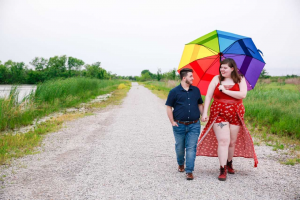If you currently are, or recently have been, single, then you’ve probably heard of an app called Tinder. Or its’ more feminist sibling, Bumble. Perhaps, you’ve even heard of Grindr or Her if you’re LGBTQ+ identifying, or just well versed in dating apps. Online dating is nothing new. It dates back to 1995 with the creation of Match.com, but the creation of Tinder really revolutionized the industry, (though it was not the first dating app on the market). The release of Tinder spurred the creation of more and more dating apps.
With Tinder, no longer did you have to look at full profiles, and read detailed descriptions of who someone thinks they are and why they think they’d be a good match for you. Instead, you could simply swipe through photos without ever opening the profile and determine solely based on looks whether or not you think you’re compatible with someone. Tinder simplified things down to a science: swipe right if you’re interested, left if you’re not. If they like you too, you’ll match and you can chat. If they don’t like you back, you can’t message them. Simple, easy.
When I first got on Tinder back in 2016, I was nearing the end of high school and had recently turned 18, making me one of the people in my friend group old enough for the full Tinder experience. (At the time, Tinder also had a teen section for ages 16-18). My friends had gotten into it while I was seeing my first girlfriend, but after we broke up they encouraged me to download the app. I was recently out as bisexual, and the queer dating pool at my high school was pretty limited, so I decided to give it a try.
It wasn’t until I was a few weeks away from leaving for college that I got brave enough to go on my first Tinder date. It went horribly, we were not at all compatible (plus he showed up almost an hour late, said he would buy me coffee, but didn’t, and talked my ear off for two hours without me getting a word in edgewise). Despite that, I swiped on.
Tinder has a reputation for being a hookup app, an app people can use to find a quick date or a one night stand. While yes, some people do use it for that, a survey of 1,000 Americans done by Simple Texting found 52% of Tinder users surveyed said they never had a one night stand. From that same survey, almost 14% of those surveyed said they were engaged/married to someone they met on Tinder. Despite public opinion, the facts are there: Tinder is a viable way of meeting a long term partner.
Flash forward to my sophomore year of college. One lonely night I’m swiping through Tinder, only half paying attention, when a cute guy catches my eye. I open his profile and see that his chosen anthem is “Fast Car” by Tracy Chapman (one of my all-time favorite songs!). I swipe right, and we immediately match, so I shoot him a message. Flash forward again, another two years, to October 2019. We’re now engaged and counting down to our wedding day that is in less than 7 months. We live together, we recently added a puppy to our family, and we have Tinder to thank for bringing us together.
One might assume my Tinder love story is an exception to the rule, and not the standard. Perhaps it is (though we are the second couple that I know in real life who met on Tinder and are getting married). However, according to the Pew Research Center, as of 2016 5% of Americans who are in a married or committed relationship said they met online. That is not an insignificant number of people! If you’ve been considering giving online dating a try, or getting back into it, consider this your sign- perhaps you can become just another Tinderella story.
